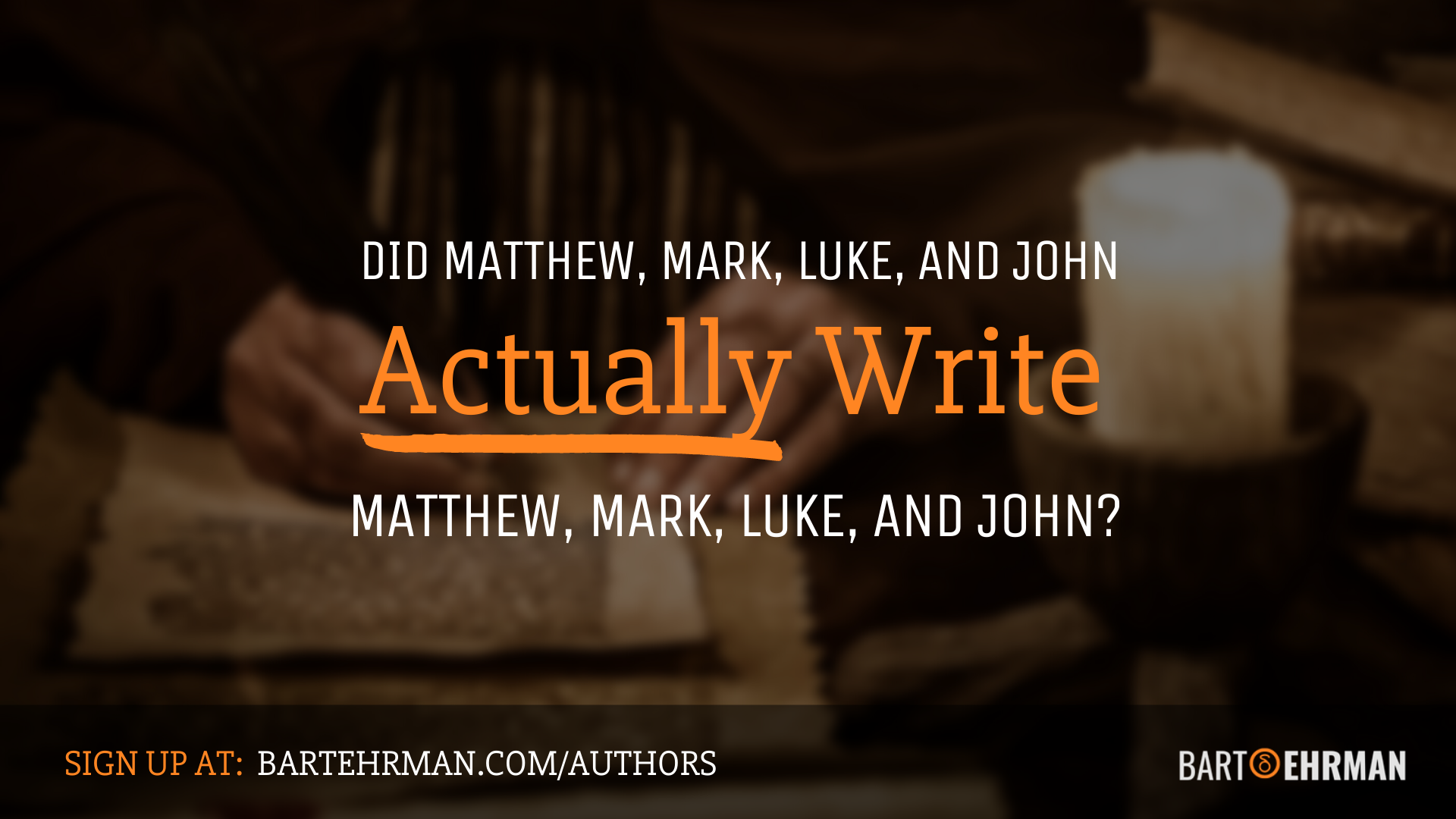When Was the Bible Canonized? (TIMELINE)

Written by Marko Marina, Ph.D.
Author | Historian
Author | Historian | BE Contributor
Verified! See our guidelines
Verified! See our editorial guidelines
Date written: February 22nd, 2025
Disclaimer: The views and opinions expressed in this article belong to the author and do not necessarily match my own. - Dr. Bart D. Ehrman
When was the Bible canonized? This question cuts to the core of both Christianity and Judaism, as the Bible stands at the heart of these two monotheistic traditions that have profoundly shaped Western civilization.
(Affiliate Disclaimer: We may earn commissions on products you purchase through this page at no additional cost to you. Thank you for supporting our site!)
Today, more than two billion Christians and over fifteen million Jews look to the Bible — not as a single book, but as a collection of sacred texts that define their faith, ethics, and worldview. Yet, the Bible as we know it didn’t appear fully formed; rather, its canonization was a gradual, complex process spanning centuries.
While we have a separate article that explores how the Bible was canonized (the debates, theological considerations, and criteria for inclusion), this article will focus on when it happened.
When was the Bible canonized and by whom? How did early Jewish and Christian communities decide which texts were authoritative? And what role did key historical figures, councils, and manuscripts play in shaping the Bible we have today?
To answer these questions, we’ll take a journey through history, examining the timeline of the Bible’s canonization. From the composition of the earliest biblical texts to the formal recognition of the canon by religious councils, this article will highlight the pivotal moments that defined the biblical tradition across centuries.
However, before we begin, let me invite you to check out a captivating lecture by Dr. Bart D. Ehrman. The title? “Did Matthew, Mark, Luke, and John Actually Write MATTHEW, MARK, LUKE, AND JOHN?” If you think they did, you’ll be surprised!
Following the historical-critical method, Dr. Ehrman provides a fresh and intriguing analysis of the New Testament Gospels, revealing the true identity of the authors behind these fundamental documents! And upon all of that, it’s completely free! Take a look. You won’t be disappointed.

When Was the Bible Canonized? A Helpful Timeline
Before we dive into the broader question of when the Bible was canonized and examine the complex process behind it, let’s first lay out a clear timeline.
By highlighting key dates and pivotal moments, we can better understand how both Jewish and Christian communities shaped their sacred scriptures over time. This timeline will walk you through the centuries-long development of the biblical canon, from the composition of the earliest texts to the official recognition of the books we now call the Bible.
Date | Event |
|---|---|
8th-7th century B.C.E. | The composition of the oldest books in the Old Testament (e.g. Amos) |
6th-5th century B.C.E. | The completion of the Torah (The First Five Books of the Hebrew Bible/Old Testament) |
2nd century B.C.E. | The youngest book of the Old Testament is completed (Daniel). |
2nd century B.C.E. | Septuagint (Greek translation of the Old Testament) is completed. |
C. 70. C.E. and 135 C.E. | The fall of the Second Temple in Jerusalem and the gradual emergence of the Rabbinic Judaism. |
C. 50-120 C.E. | The composition of the New Testament books. |
C. 140 C.E. | Marcion proposes his canon, excluding the Old Testament books entirely. |
2nd century C.E. | Jewish leaders discuss scriptural boundaries, leading to the exclusion of certain texts (e.g. Tobit). |
C. 170-200 C.E. | The Muratorian Fragment/Canon (earliest known list of NT books). It includes most, but not all, of the 27 NT books. |
325 C.E. | Council of Nicaea - the first “ecumenical” council. |
367 C.E. | Athanasius’ Easter Letter lists, for the first time in recorded history, the 27 books of the NT as authoritative. |
393 and 397 C.E. | Local councils of Hippo and Carthage affirm the 27-book NT canon. |
4th century C.E. | Codex Sinaiticus and Codex Vaticanus provide nearly complete NT manuscripts. |
1546 C.E. | Council of Trent formally confirms the Catholic Bible, including the Deuterocanonical books. |
1647 C.E. | Westminster Confession of Faith establishes the Protestant canon, excluding the Deuterocanonical books. |
When Was the Bible Canonized: An Overview of the Gradual Process
So, when was the Bible canonized? Asking this question leads us down two distinct historical paths — one shaped by Judaism and the other by Christianity. While both traditions developed sacred canons that would define their religious identities, the process unfolded in different ways, influenced by theological, social, and political factors.
The Jewish Bible (Tanakh) reached a state of relative stability by the early centuries of the Common Era, whereas the Christian canon took longer to crystallize, undergoing periods of debate, refinement, and controversy.
Judaism
By the end of the first century C.E., Jewish texts were already categorized into three categories: the Torah (Law), the Nevi’im (Prophets), and the Ketuvim (Writings). This division, which would later be formalized as the Tanakh, suggests that Jewish communities had a broad sense of scriptural authority.
However, the destruction of the Second Temple in 70 CE marked a pivotal turning point. The loss of the sacrificial system and centralized worship in Jerusalem compelled Jewish leaders to place even greater emphasis on religious texts as the foundation of Jewish identity and practice.
Additionally, the collapse of the Second Temple sects (e.g. the Sadducees, who were closely tied to temple rituals) left the Pharisaic movement, with its strong emphasis on textual study and interpretation, as the dominant force in shaping post-Temple Judaism.
The emergence of Rabbinic Judaism in this period further reinforced the need for a defined scriptural canon, particularly as Christianity, which began as a sect within Judaism, started to diverge and gain followers among non-Jews.
By drawing clearer boundaries around sacred texts, Jewish leaders solidified Judaism's identity in contrast to the emerging Christian movement.
Although no official council declared a closed Jewish canon at a specific moment, scholars generally agree that between 70 and 150 CE, fundamental decisions about the Jewish Bible were made.
As James A. Sanders explains:
The canonical process was more realistically one of bodies of literature passing the tests of time and space in terms of their value for many scattered believing communities. Canonicity was recognized by communities of faith with common identity as having in effect already taken place because of sociopolitical factors and community needs and not because of deliberate or conciliar decisions; councils for the most part only ratify what has already happened among the people.
The discovery of Torah scrolls at Wadi Murabba‘at (c. 135 CE) provides further evidence of informal textual standardization, supporting the idea that by the second century, Jewish communities largely recognized the threefold division of the Tanakh as authoritative.
When Was the New Testament Canonized?
The process of Bible canonization within Christianity unfolded more rapidly and was marked by greater internal conflict. In the earliest years of the movement, Christian communities naturally exchanged, copied, and read various letters and gospels, but there was no universally agreed-upon collection of sacred writings.
“From the beginning,” Lee M. McDonald writes, “the proclamation about the death and resurrection of Jesus, circulated among the Christian churches in oral form. Some of this tradition was written quite early (ca. 35-65), but much of it remained in oral form for a considerable period of time.”
A Christian community in Rome around the late first century, for example, might have had access to some of Paul’s epistles and one or two Gospels, but their collection would not have been necessarily identical to that of a Christian community in Asia Minor or Syria.
Did You Know?
Christianity’s Differences and One Bold Move to Overcome Them
Throughout history, Christianity has encompassed a rich tapestry of diverse traditions, doctrines, and practices. This diversity has often led to disagreements, including debates over the biblical canon and even the date of Easter. However, there have been notable efforts to bridge these divides in the spirit of unity.
In a recent example, Pope Francis has expressed a desire to unify the celebration of Easter between the Western and Eastern branches of Christianity.
Notably, in 2025, Easter will fall on the same date for both traditions — a coincidence that Pope Francis sees as an opportunity to establish a common date for future celebrations. He stated: “I renew my appeal that this coincidence may serve as an appeal to all Christians to take a decisive step forward toward unity around a common date for Easter.”
This initiative reflects ongoing ecumenical efforts to foster unity among Christian denominations, acknowledging shared beliefs while respecting historical and cultural differences. Such endeavors highlight the dynamic interplay between tradition and adaptation within the Christian faith.
By the mid-second century, increasing theological disputes forced Christian leaders to take a more deliberate approach to defining authoritative texts.
One challenge came from Marcion, a controversial figure who advocated for a drastically reduced canon. He rejected the Old Testament entirely and embraced only an edited version of Luke’s Gospel and select Pauline letters.
On the opposite end of the spectrum, certain Gnostic groups sought to expand the canon, incorporating esoteric texts such as the Gospel of Judas or the Gospel of Thomas as part of their spiritual framework.
These competing perspectives forced Christian leaders to clarify which writings were truly representative of the teachings of Jesus and his first followers.
By the late 2nd century, a mix of stability and fluidity defined the New Testament canon. Irenaeus of Lyons (c. 180 C.E.) firmly defended the authority of the fourfold Gospel tradition (Matthew, Mark, Luke, and John) and recognized Paul’s epistles as essential.
However, uncertainty remained over certain books. While Revelation, for instance, was accepted in some regions, it was disputed in others. The historian Eusebius (early 4th century) documented this tension, categorizing books as “acknowledged,” “disputed,” or even “spurious.”
By the end of the fourth century, greater consensus had emerged. The Paschal (or festal) Letter of Athanasius (367 C.E.) explicitly, for the first time in recorded history, listed the 27 books that would later be recognized as the New Testament.
In the book Athanase d'Alexandrie et l'Église d'Égypte au IVe siècle (Athanasius of Alexandria and the Egyptian Church in the 4th century) Annick Martin explains the historical significance of Athanasius’ letter and his public ministry:
“In the absence of further evidence, the list of 367 constitutes the first known of its kind, provided by the Church of Alexandria, recording its tradition. The festal letter was translated into Coptic at the order of Theodore, who had the scriptural canon displayed in all the Pachomian monasteries ‘so that it may serve as a rule’... Athanasius always attached great importance to this issue of the Scriptures; it was one of his main points of attack against the Meletians [a schismatic group within early Egyptian Christianity, led by Meletius of Lycopolis], who are particularly targeted here. He had long accused them of ‘not knowing the true faith in Christ and even less what Christianity is, or what we, as Christians, hold to be the Scriptures.’” (my translation)
Shortly afterward, the (local) Councils of Hippo (393 C.E.) and Carthage (397 C.E.) affirmed this canon in a more official capacity. However, discussions did not fully end! Well into the 4th century, texts such as the Epistle of Barnabas were still included in some collections, while books like 2 Peter faced scrutiny.
In both Judaism and Christianity, the issue of when the Bible was canonized was as much about defining religious identity as it was about selecting sacred texts. Additionally, rather than a single moment or council deciding the issue, the canonization of the Bible was a gradual and dynamic process, shaped by theological disputes, religious reforms, and historical events.
As we’ll see in the next section, debates over the biblical canon didn’t come to a halt in the 4th or 5th centuries. As new theological challenges emerged (particularly with the rise of various heretical movements in the High Middle Ages) the Catholic Church found itself reaffirming the boundaries of Scripture.
This issue became even more pressing during the Protestant Reformation (16th century) when differing views on Biblical authority led to a reshaping of the canon in certain Christian traditions. So, when was the Catholic Bible canonized? Let’s take a closer look!
When Was the Catholic Bible Canonized?
Throughout most of the Middle Ages, the Catholic Church held an unrivaled position as both a religious and, at times, political authority in Europe. It was the sole institution capable of defining orthodoxy and interpreting the Scriptures for the faithful.
The Vulgate, the Latin translation of the Bible completed by Jerome in the late 4th and early 5th centuries, served as the Church’s official biblical text.
Yet, the stability of Catholic dominance over the biblical tradition faced its first serious external challenge in the High Middle Ages (10th-13th centuries) with the emergence of heretical movements such as the Cathars in France and Waldensians in Italy.
These groups not only questioned Church doctrine and ecclesiastical authority, but some of them also sought to establish alternative biblical traditions — rejecting certain books, promoting vernacular translations, or undermining the Church’s exclusive right to interpret Scripture.
By the Late Middle Ages (14th-15th centuries), new theological challenges emerged with John Wycliffe’s Lollards in England and Jan Hus’ followers in Bohemia, both of whom sought to restore biblical authority to the common people.
By the time the Protestant Reformation erupted in the early 16th century, it was already too late for the Church to reverse these changes. The Reformation not only called for biblical translations in local languages, but it also fundamentally questioned the central doctrines of the Catholic church and which books belonged in the Bible.
In response, the Council of Trent (1546 C.E.) took decisive action, formally confirming the Catholic Bible as including the Deuterocanonical books. This move solidified the Catholic canon and pushed the Catholic Church away from Protestantism.
So, when was the Catholic Bible canonized? The canonization of the Catholic Bible was a gradual process spanning centuries (from late antiquity well into the medieval period). The culmination of that process came with the Council of Trent!
Finally, in his analysis of medieval Europe, historian John H. Mundy noted that “clerks, monks or laymen, and laywomen, those who diverged from orthodoxy were to change the character of the Church.”
The rise of the Protestant Reformation proved that beyond a reasonable doubt! That brings us to the following question: When was the protestant Bible canonized?

When Was the Protestant Bible Canonized?
The Protestant Reformation, triggered by Martin Luther in the early 16th century, fundamentally changed the landscape of Western Christianity. What began as a protest against the sale of indulgences quickly developed into a theological revolution that challenged the authority of the Pope and the role of the Catholic Church as the interpreter of the Holy Scriptures.
Luther's study of the Bible led him to develop two key doctrines that would define Protestant thought: Sola Scriptura (Scripture alone), which rejected the idea that Church tradition held equal authority with the Bible, and Sola Fide (faith alone), which emphasized that salvation comes through faith in Christ rather than through works or sacraments.
Luther’s reevaluation of biblical authority extended to the Deuterocanonical books (sometimes referred to as the Apocrypha). While he didn’t remove them from the Bible entirely, he placed them in a separate section, arguing that, while they were useful for reading, they weren’t divinely inspired in the same way as the Old and New Testaments.
This distinction laid the groundwork for later Protestant traditions that would exclude these books altogether from their canon.
By the mid-17th century, Protestantism had further solidified its stance on the biblical canon. The Westminster Confession of Faith (1647 C.E.), a foundational document for Reformed Christianity, formally affirmed the 66-book canon — excluding the Deuterocanonical books entirely.
Conclusion
When was the Bible canonized? As we have seen, this question doesn’t have a simple answer. Rather than a single moment in history when an official canon was declared, the process of canonization was gradual, dynamic, and deeply influenced by theological, political, and social factors.
The Jewish canon took shape over centuries, shaped by the collapse of the Temple, the rise of Rabbinic Judaism, and the need to define religious boundaries in contrast to early Christianity.
Meanwhile, the Christian canon was forged through intense debates over which texts authentically preserved the teachings of Jesus and the apostles, culminating in the late 4th century with the canon lists of Athanasius, the Councils of Hippo and Carthage, and key early manuscripts.
Yet, this was far from the end of the story. Medieval heresies, the Protestant Reformation, and the Counter-Reformation continued to shape and solidify different versions of the biblical canon.
The Council of Trent (1546 C.E.) reaffirmed the Catholic canon, including the Deuterocanonical books, while the Protestant tradition ultimately removed these books, formally codifying the 66-book canon in the Westminster Confession of Faith (1647 C.E.).
FREE COURSE!
WHY I AM NOT A CHRISTIAN
Raw, honest, and enlightening. Bart's story of why he deconverted from the Christian faith.
Over 6,000 enrolled!

